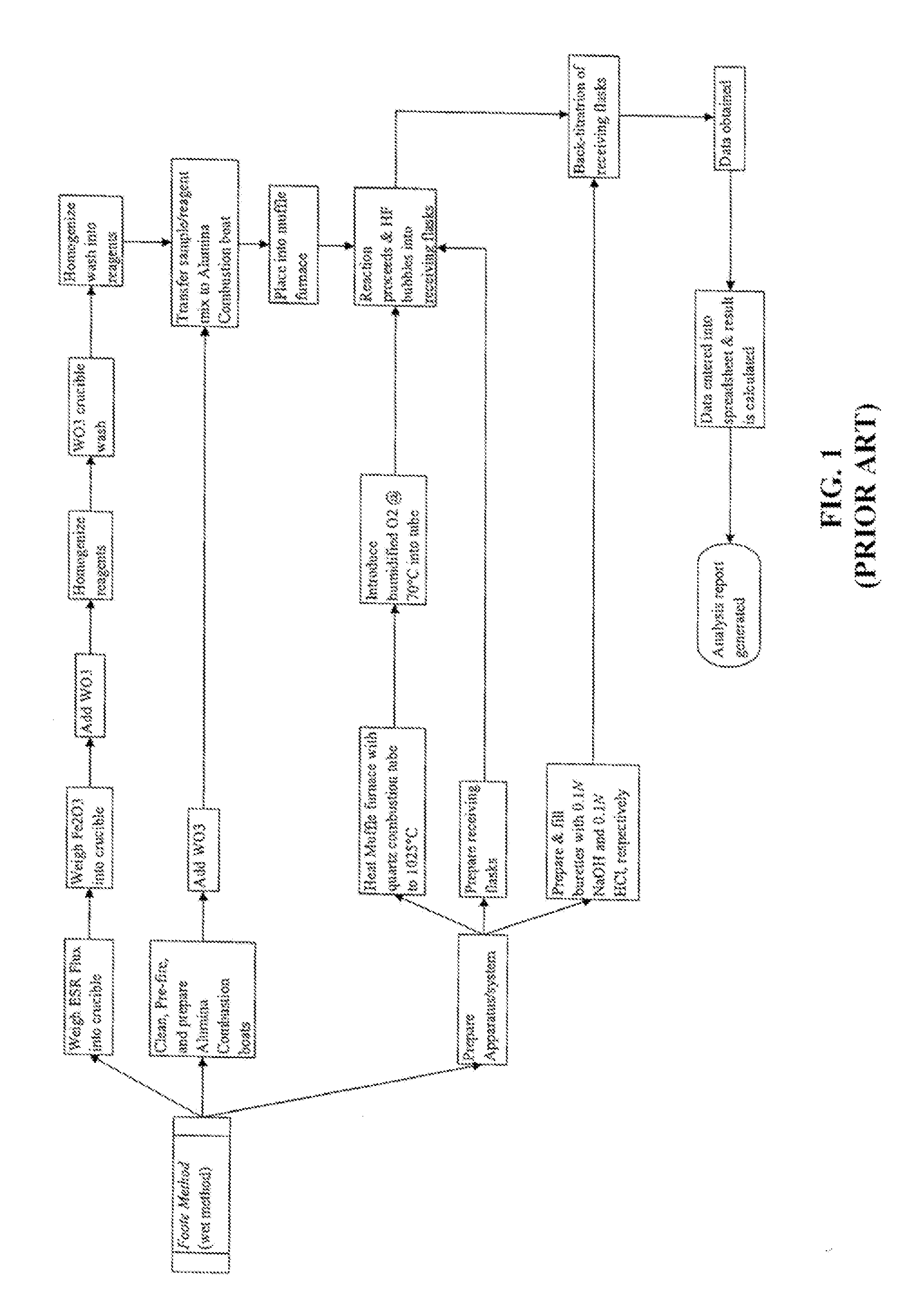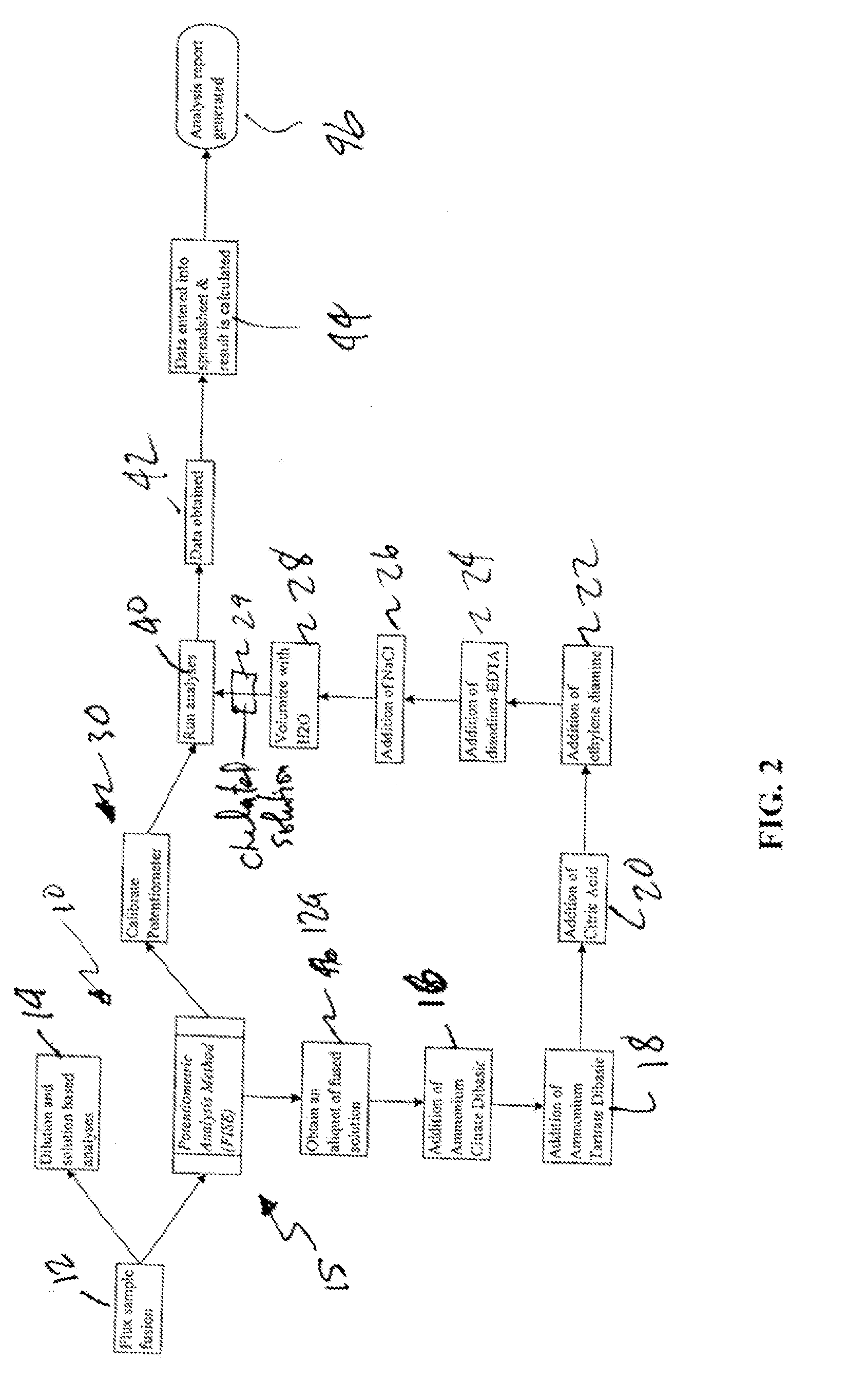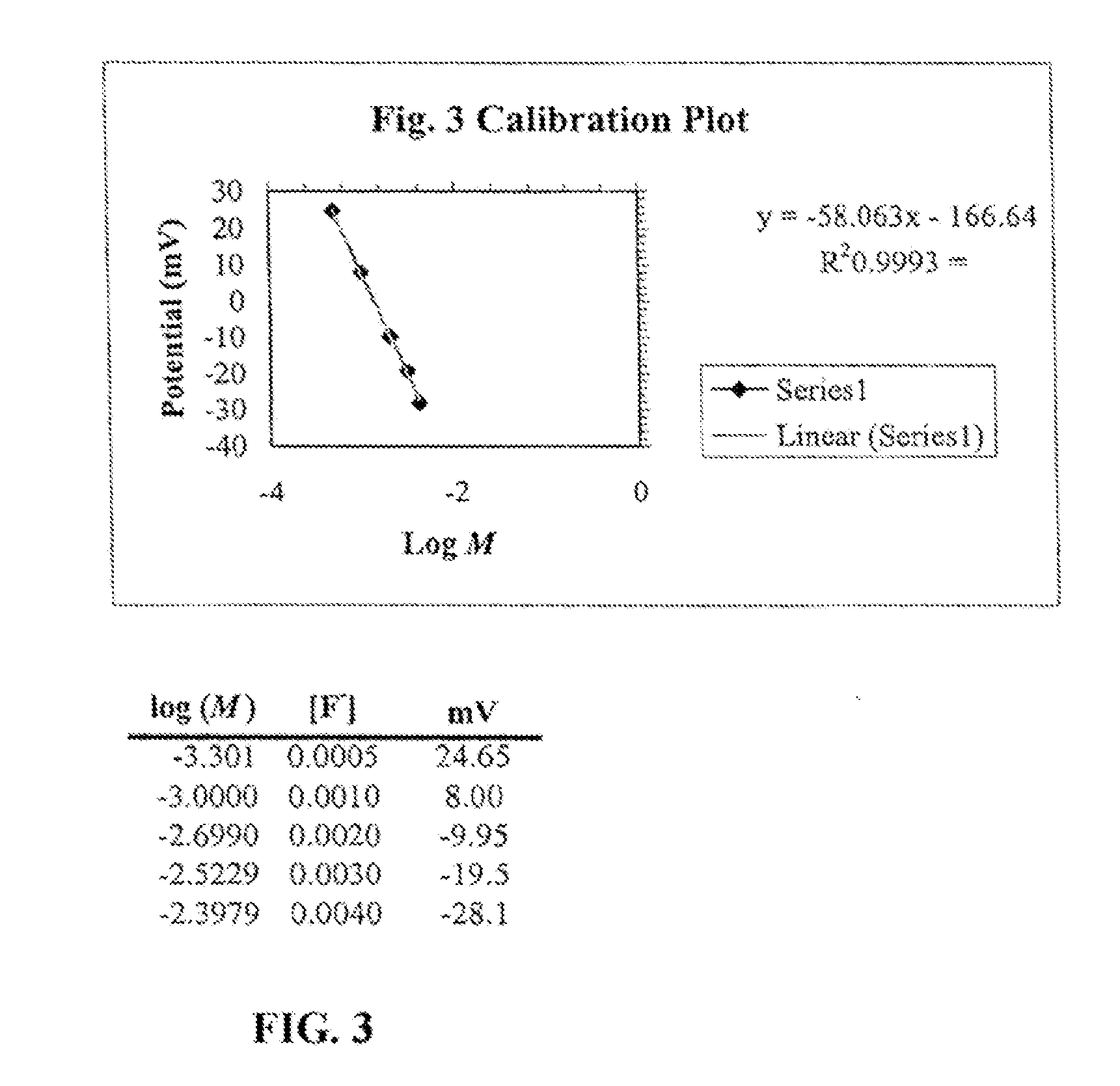Method of Measuring Fluoride in Fluxes Using the Fluoride Ion-Selective Electrode
a technology of fluoride and electrode, which is applied in the direction of material analysis, instruments, testing metals, etc., can solve the problems of difficult and time-consuming process of verifying the chemical composition of fluxes, difficult to quantify caf/sub>2, and difficult to quantify fluorid
- Summary
- Abstract
- Description
- Claims
- Application Information
AI Technical Summary
Benefits of technology
Problems solved by technology
Method used
Image
Examples
Embodiment Construction
[0019] The invention relates to a preferred method of measuring fluoride in fluxes using the fluoride ion-selective electrode. FIG. 1 depicts a flow chart depicting the steps for carrying out the potentiometric fluoride determination method 10 of the present invention.
[0020] The present invention relates to the use of potentiometric methods in an effort to develop a low-cost, rapid and reproducible method for F−ion estimation. Potentiometric techniques offer utility for a cost-effective, reliable and timely fluoride analysis because measurements are quick, inexpensive, and most types of samples do not require extensive preparation. In addition, samples containing suspended particulates in solution are not problematic with potentiometric methods. Methods for potentiometric determination of fluoride in a variety of matrices, such as drinking water and blood samples, have been extensively investigated utilizing a FISE.
[0021] Because an FISE responds to F−ion activity in aqueous solut...
PUM
| Property | Measurement | Unit |
|---|---|---|
| mass ratios | aaaaa | aaaaa |
| pH | aaaaa | aaaaa |
| strength | aaaaa | aaaaa |
Abstract
Description
Claims
Application Information
 Login to View More
Login to View More - R&D
- Intellectual Property
- Life Sciences
- Materials
- Tech Scout
- Unparalleled Data Quality
- Higher Quality Content
- 60% Fewer Hallucinations
Browse by: Latest US Patents, China's latest patents, Technical Efficacy Thesaurus, Application Domain, Technology Topic, Popular Technical Reports.
© 2025 PatSnap. All rights reserved.Legal|Privacy policy|Modern Slavery Act Transparency Statement|Sitemap|About US| Contact US: help@patsnap.com



